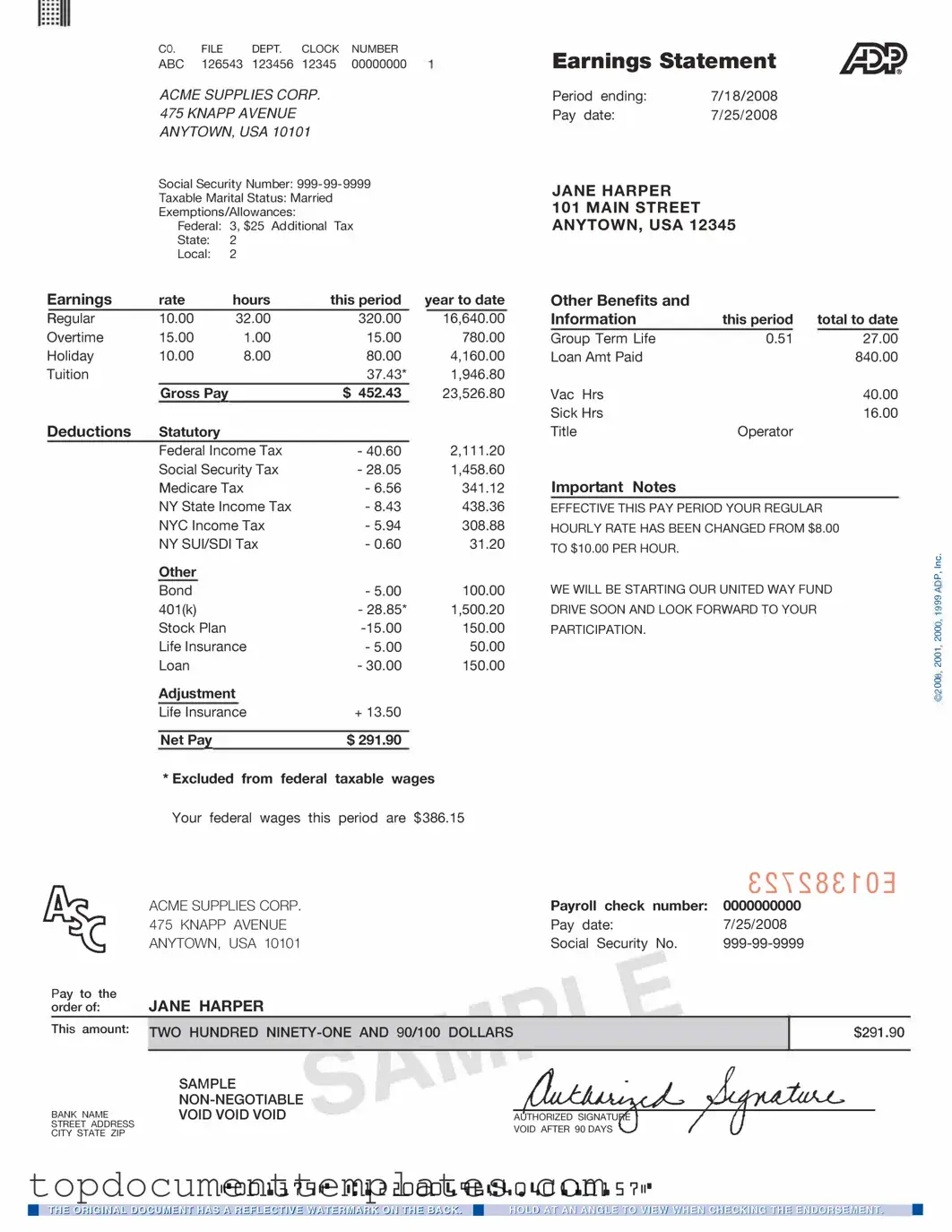Blank Adp Pay Stub PDF Form
The ADP Pay Stub form is a document that provides detailed information about an employee's earnings, deductions, and net pay for a specific pay period. It serves as an essential record for both employees and employers, ensuring transparency in payroll processing. To get started with your pay stub, click the button below.
Open This Form
